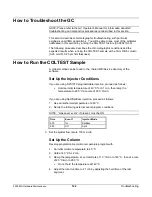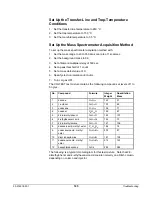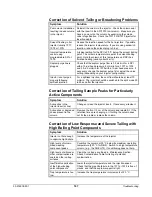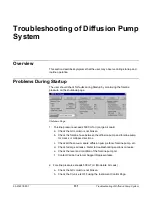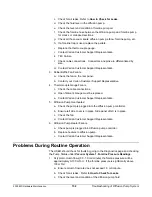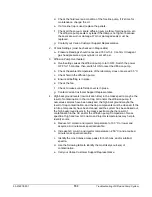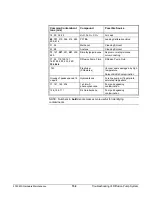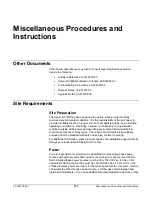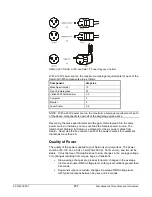
2000 MS Hardware Maintenance
158
Miscellaneous Procedures and Instructions
•
Transients (or impulses) are brief voltage excursions of up to several
thousand volts with durations of less than 50
µ
sec.
Constant high line voltage or surges in voltage can produce overheating and
component failures. Constant low line voltage or sags in voltage may cause the
system to function erratically or to even cease functioning. Transients, even of a
few microseconds duration, may cause electronic devices to fail catastrophically
or degrade sufficiently to significantly shorten their lives. Therefore, it is
important to establish the quality of the line power in your laboratory before you
install your Saturn.
Operating Environment
It is your responsibility to provide an acceptable operating environment.
Attention paid to the operating environment will ensure continued high
performance of your Saturn GC/MS. Expenditures for air conditioning will be
more than offset by good sample throughput and a reduction in repair costs.
Temperature
The laboratory temperature must be held between 15 and 30
°
C (59 and 86
°
F)
for the turbomolecular pump system and 15 to 35
°
C for the diffusion pump
system. The optimum operating temperature is between 18 and 21
°
C (65 and
70
°
F).
NOTE: As the laboratory temperature increases, system reliability decreases.
All electronic components generate heat while operating. This heat must be
dissipated to the surrounding air if the components are to operate reliably.
The turbomolecular pump’s temperature cutoff protects the bearing and prolongs
its lifetime. If the laboratory temperature is significantly above 30
°
C (86
°
C), the
pump cutoff temperature could be reached, and this would result in the pump
being shutdown.
There must be a good flow of air around the system, and the air conditioning
must be capable of maintaining a constant temperature (within operational limits)
in the immediate vicinity of the system. The average steady-state heat load of
the Saturn GC/MS is 6000 BTUs, with a possible short-term heat dissipation of
15000 BTUs during startup. If a 3600 GC is used, heat dissipation increases by
about 1200 BTUs.
Humidity
The relative humidity of the operating environment must be between 40 and
80%, with no condensation. Operating a Saturn GC/MS at very low humidity will
result in the accumulation and discharge of static electricity; this will shorten the
life of electronic components. Operating the system at high humidity will produce
condensation and result in short circuits. High humidity will also block the filters
on cooling fans and accelerate wear of the heads in the diskette drives.
Varian recommends that your laboratory be equipped with a
temperature/humidity monitor. This will ensure that your laboratory is always in
conformance with temperature and humidity specifications.

